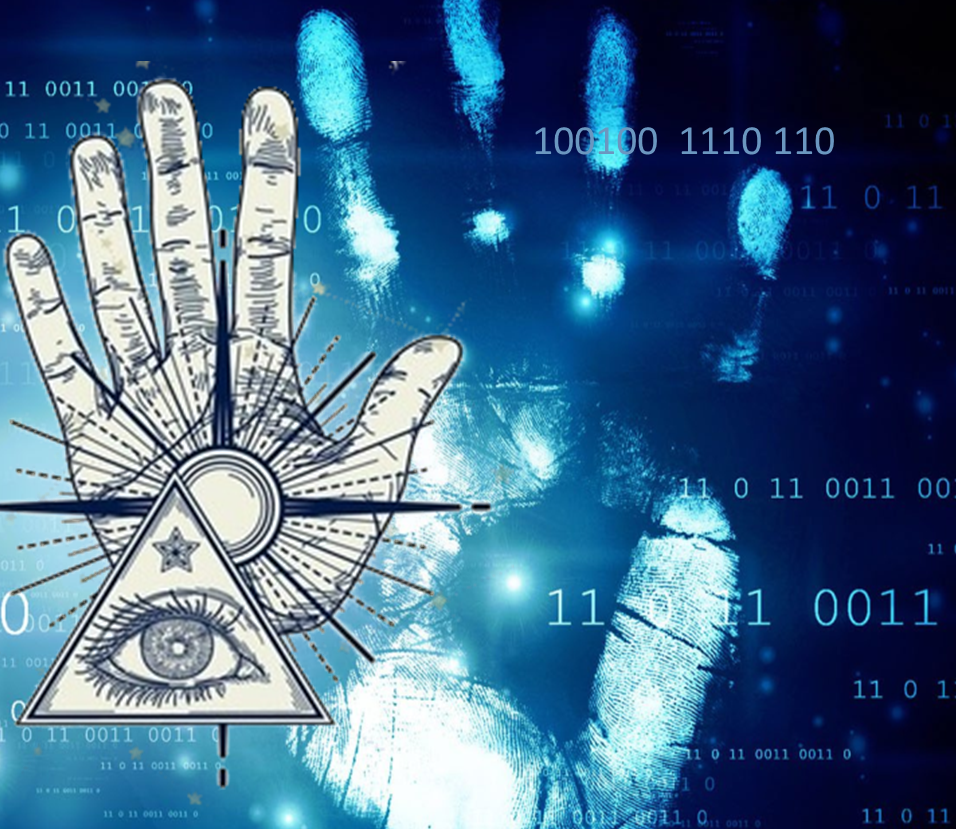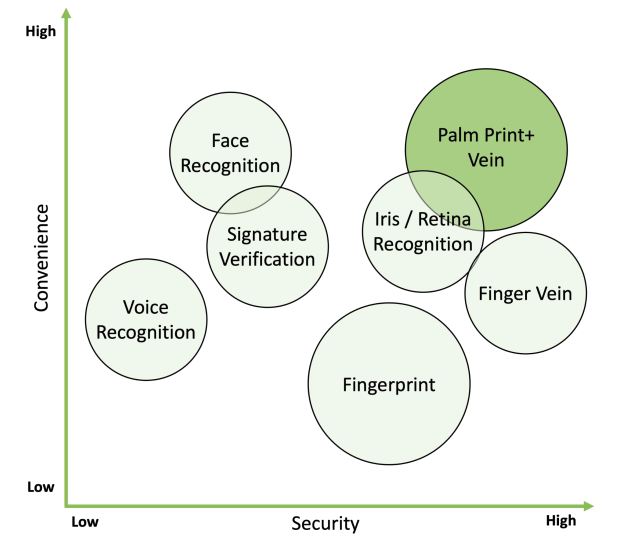Palm Readers for Door Entry Control

Do you want your palm read? I’m not talking about palmistry which has been around for thousands of years, but the more recent biometric palm reading that can identify a person. Interestingly, both techniques read the lines of your hand. One predicts your fortune the other opens the door. Palm readers are excellent for contactless door entry control.
This article describes how biometric Palm and Face Readers work in Door Access Control Systems.
How Palm Readers Identify a Person
Touchless Palm Recognition uses a near-infrared (NIR) light source to illuminate the palm of the user’s hand. The hand is held near the sensor and doesn’t touch it. The blood in the veins absorbs the NIR light, but the surrounding tissue reflects it. This creates a unique pattern of light and dark areas that a sensor can capture. The sensor and computer then convert the image into a digital template stored in a database.
When the user presents their hand to the touchless palm-vein scanner, the scanner compares the current image of their veins to the template stored in the database. If the two images match, the user is authenticated.
Door Access Control in Secure Environments
Biometric palm readers are often used in high-security environments like government facilities, research labs, and financial institutions. They are considered to be a highly secure form of access control because each person’s palm print is unique, making it difficult for someone to gain access using a fake or stolen identity.
Palm Readers for Door Access Control
Palm-vein recognition is a highly accurate and secure form of authentication. It is difficult to forge a vein pattern, and it is not affected by changes in appearance, such as dirt, sweat, or aging. Palm-vein recognition is also contactless, which makes it hygienic and convenient.
Advantages of Using Palm-Vein Recognition:
- Accuracy: Palm-vein recognition is one of the most accurate biometric authentication technologies. It has a false acceptance rate (FAR) of less than 0.01% and a false rejection rate (FRR) of less than 0.1%.
- Security: Palm-vein recognition is a very secure form of authentication. The veins in the palm are not visible to the naked eye, and they are difficult to forge. Palm-vein recognition is also contactless, which makes it more hygienic than other biometric authentication technologies, such as fingerprint scanning.
- Convenience: Touchless palm-vein recognition is a very convenient form of authentication. Users simply need to place their hand near the scanner to be authenticated. This makes it ideal for use in applications where speed and convenience are essential, such as access control to buildings and facilities.
Palm-vein recognition is growing and is expected to become even more popular. It is a highly accurate, secure, and convenient form of authentication that is well-suited for a variety of applications.
How Face Recognition Works
Palm and face recognition are very secure and perfect for Door Access Control systems. Face recognition technology uses algorithms to analyze and identify faces in digital images or videos.
Face recognition technology has gained significant attention and application in recent years due to its numerous advantages and potential benefits. Face recognition can be used to secure buildings, devices, and even borders. It is more secure than other forms of authentication, such as passwords, because it is difficult to forge a face. The “spoofing” algorithm ensures that the face presented is from a person rather than an image.
Security and Access Control: Face recognition can enhance security systems by accurately identifying individuals based on facial features. It can be used for access control in various settings, such as airports, government buildings, and workplaces, replacing traditional methods like keys or ID cards. Face recognition can help prevent unauthorized access, reduce fraud, and enhance overall security.

Biometric Reader Reader Provides Face and Palm Recognition

Biometric readers provide a very reliable way to provide secure door access control. The latest combination reader can recognize a face or a palm, giving it excellent flexibility and reliability. The model TVIP-Face8WP is an example of a combination reader.
Combining the latest advancements in Artificial Intelligence (AI) with an optimized dual-core CPU, the Face8WP has a powerful embedded anti-spoofing engine that can withstand almost all types of fake attacks.
The face and palm recognition algorithm has been designed for the variable conditions found in outdoor environments.
Summary of Biometric Door Access Control Using Palm and Face Recognition
Palm recognition is the new form of contactless biometric door access control. Unlike other biometric door control systems, palm readers can be used outdoors. The latest biometric door readers can use multiple credentials, such as face, palm, or card credentials. Door access control systems benefit from the increased security provided by biometric readers.
If you would like help selecting the biometric reader for your door access system, please contact us at 1-800-431-1658 in the USA or 914-944-3425 everywhere else, or use our contact form.